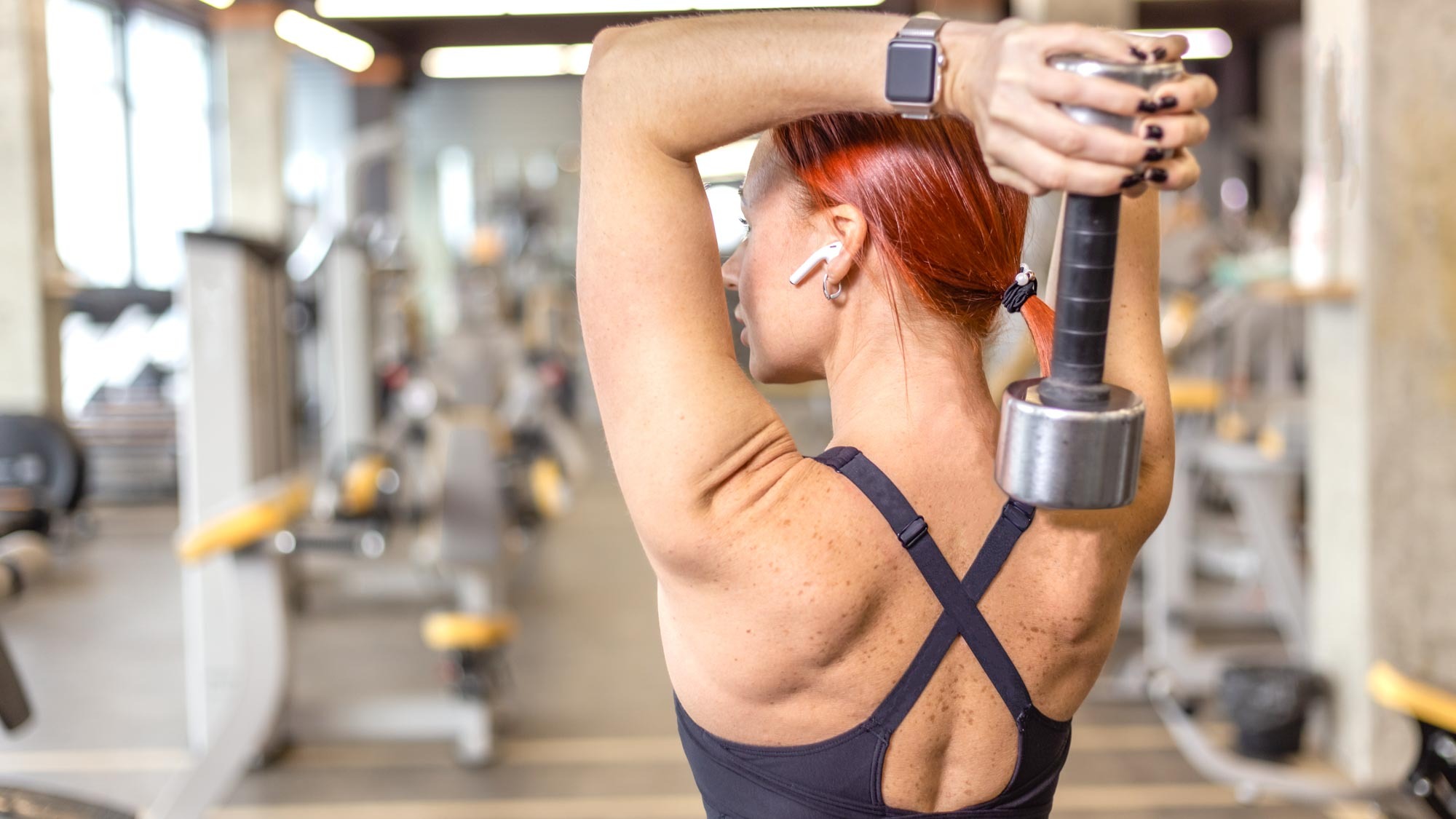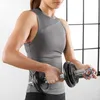No, not push-ups — strength coach shares the benefits of overhead triceps extension and to how master the correct form

Exercises like push-ups (especially diamond push-ups) and tricep kickbacks are popular for targeting the triceps, but the overhead triceps extension is one exercise you shouldn’t overlook. This exercise stretches and strengthens the entire tricep muscle through a full range of motion, hitting areas other exercises can miss.
You can use a dumbbell or a weight plate to perform the move. As with any exercise that involves weight, start with a lighter weight to focus on your form, and gradually increase it as you get stronger. If you're in a gym, you can easily adjust to heavier weights, while at home, one of the best adjustable dumbbells will let you change the weight to match your progress.
To understand why the overhead triceps extension is essential for any triceps workout, we spoke with Luiz Silva, a personal trainer, spin instructor and certified strength and conditioning coach. Silva explained the main benefits of this exercise, shared tips on perfecting your form, and offered two variations to keep your arm days exciting.
What are the benefits of overhead triceps extensions?

According to Coach Silva, the overhead triceps extension is particularly effective because it, “Increases the angle of the shoulder joint, stretching the long head of the triceps.” The long head of the triceps is the largest part of the triceps muscle, running along the back of your upper arm and extending from the shoulder joint to the elbow. It's responsible for both extending the elbow and stabilizing the shoulder.
The stretching involved in an overhead triceps extension is key to fully activating the muscle. When you raise your arms overhead, the long head is engaged more than with other triceps exercises, leading to greater tension and harder work for the muscle. Silva adds, “This extra stretch increases the tears in the muscle fibers,” which is essential for muscle growth.
The combination of increased muscle fiber tears and the range of motion delivered by the overhead position makes this exercise powerful for both muscle hypertrophy and toning. Whether your goal is to build strength or increase muscle definition in your arms, incorporating the overhead triceps extension can boost your progress.
What is the correct form for an overhead triceps extension?
- Sit or stand up, holding a dumbbell or weight plate above your head. Keep the weight slightly forward so you can just see your elbows.
- Bend your elbows and lower the weight behind your neck. As you do this, keep your shoulders away from your ears to stabilize them and protect your neck. Make sure your elbows stay squeezed inward to better isolate the triceps.
- Pull your belly in tight and brace your core to prevent arching in the lower back. If you’re standing, keep your knees slightly bent for added stability.
- Straighten your arms and return the weight to the starting position above your head, maintaining control throughout the movement.
Are there any variations of the overhead triceps extension?
Yes! Silva suggested two variations of the overhead triceps extension move that are worth trying in your next upper body session.
Get instant access to breaking news, the hottest reviews, great deals and helpful tips.
One-arm Dumbbell Triceps Extension
- Stand or sit and hold a dumbbell in one hand above your head. Use your opposite hand to gently support the working arm by holding it just below the elbow.
- Bend your elbow and slowly lower the dumbbell behind your neck. Keep your core engaged to prevent arching your back, and maintain control throughout the movement.
- Straighten your arm to lift the dumbbell back to the starting position above your head. Ensure your elbow stays close to your head to isolate the triceps.
Lying down triceps extension
- Lie on your back on the floor or a bench, holding a dumbbell in each hand. Extend your arms straight up, positioning the dumbbells directly above your shoulders.
- Bend your elbows and slowly lower the dumbbells toward the sides of your head. Focus on keeping your elbows pointed inward as you lower the weights to maintain proper form and isolate the triceps.
- Straighten your arms to raise the dumbbells back to the starting position above your shoulders. Keep your core engaged to stabilize your body.
More from Tom's Guide
- 5 best exercises to grow your triceps using a resistance band
- I did triceps dips every day for a week — here’s what happened
- 4 reasons you’re not building muscle in the gym — according to a strength and conditioning coach

Jessica has been a fitness writer at Tom’s Guide since 2023, bringing three years of experience writing about health, fitness, and the great outdoors. Her passion for exercise began during her childhood, where she spent weekends hiking and competing in local athletics club events. After earning a master’s degree in journalism from Cardiff University, Jessica found the perfect way to combine her love of storytelling and fitness into a career.
Jessica is passionate about testing fitness gear and tech, using her reviews to help readers make informed buying decisions. She ran her first marathon in April 2024, finishing it in 3 hours and 48 minutes. Through her training, she’s developed a deep understanding of what it takes to grow as a runner, from effective workouts and recovery techniques to selecting the right gear for every challenge.
When she’s not at her desk, Jessica enjoys spending time in the kitchen crafting new recipes, braving cold water swims and hiking.




